
AASCU institutions are setting the standard for efficient course schedules that are designed around students’ needs.
This report highlights AASCU member institutions who’ve benchmarked their scheduling effectiveness through the HESI* and compares AASCU institutions to the broader database of 300 higher education institutions.
*The Higher Education Scheduling Index (HESI™) is a database for course scheduling that tracks 50 variables related to course scheduling patterns and institutional activity.
AASCU’s 400 member colleges and universities are deeply committed to student access, success, and opportunity. Collectively, they serve nearly four million students, and enroll a significant portion of undergraduates who are first generation, Pell-eligible, or members of underrepresented minority groups. They are designed to be - and strive to be - engines for economic mobility.
To fulfill this role, AASCU institutions must come up with creative solutions to better serve ‘post-traditional’ students who are more likely to be working, parenting, or generally balancing complex schedules around their obligations. This requires AASCU institutions to be both more thoughtful and more transparent about the ways - online or in-person, during the day or at night, or some hybrid - students can make progress and complete their credentials. And they are faced with the challenge of providing greater options and transparency with more limited resources than many other four-year institutions. They must do all of this with fewer resources.
For these reasons, perhaps it’s no surprise that AASCU institutions are setting the standard for efficient course schedules that are designed around students’ needs. They are much more likely than other colleges and universities to adhere to a set meeting pattern during prime hours - dramatically reducing the possibility that students are faced with overlapping times for classes they need to take. This allows students to stay on track, and also uses teaching and classroom resources more efficiently.
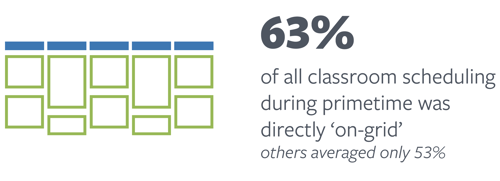
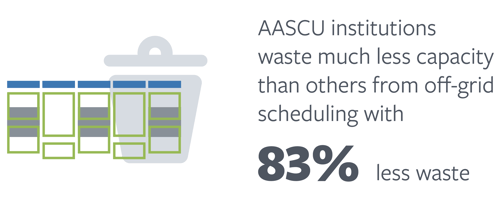
AASCU colleges and universities, more broadly, are leaders in thoughtful stewardship of teaching and classroom resources. They are less likely than other institutions to have under-enrolled classes. And they also are more strategic about how they use physical space. Taken together, these efforts allow institutions to use public funds and tuition dollars as efficiently as possible, helping to hold down the cost of college and potential tuition increases.
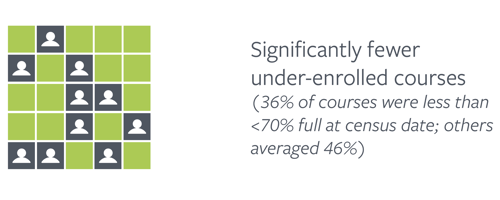
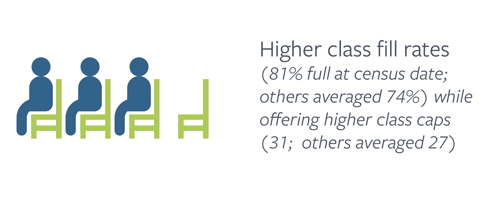
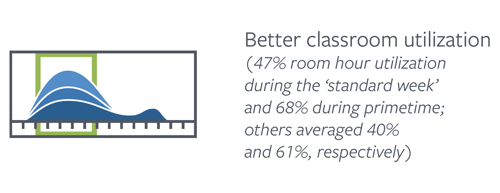
Oklahoma State University-Oklahoma City, for example, was able to use a strategic scheduling check-up to significantly reduce the number of low-enrolled courses, particularly those taught by adjunct faculty who had to be hired specifically for those courses. This helped the institution save about $500,000 each year.
While AASCU member institutions, generally, are using the course schedule well in key areas, there are other critical areas that could benefit from continued focus. One is a more holistic look at what we call “enrollment health,” essentially offering courses when and where the highest number of students are available. Too many institutions make course offering decisions based on faculty availability, leaving students to rearrange their work schedules, drive to a campus across town, or simply miss out on a course one semester. This slows - or derails - student progress to degree, results in a high number of cancelled or under-enrolled courses, and increases the cost of delivering a program.
For institutions with growing enrollments, or where enrollment health is high for certain majors, demand for seats in popular courses can outstrip the supply. AASCU institutions, in particular, struggle with bottlenecked courses.
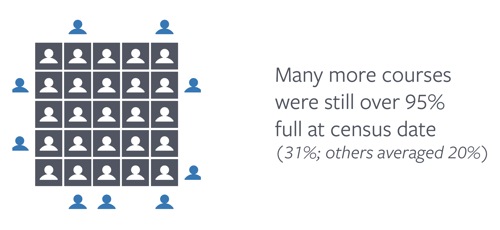
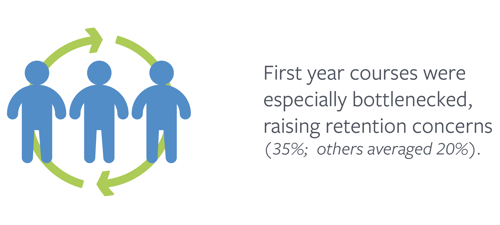
The California State University system, as one example, shows what’s possible when administrators and faculty use analytics to guide course scheduling and reduce course bottlenecks. The system recognized that students often couldn’t get the courses they needed to make academic progress, and that these bottlenecks were threatening its universities’ ability to meet their Graduation Initiative 2025 goals.
To address this challenge, Ad Astra has worked with 11 CSU campuses to strategically add the courses that are most needed by students to graduate on time. At Sacramento State, the average credit load taken by students has increased, helping to boost four-year graduation rates by 5 percentage points overall and increasing retention by 3.75% percentage points in just two years. Similarly, CSU, Long Beach increased four-year graduation to 33% by better aligning its advising and course access.
And these examples just scratch the surface of what’s possible.

Ad Astra is higher education’s solution partner in managing the academic enterprise. Partnering with more than 500 colleges, universities, and systems nationwide, Ad Astra helps improve stewardship of instructional resources, streamline student access to courses, and accelerate student completions.